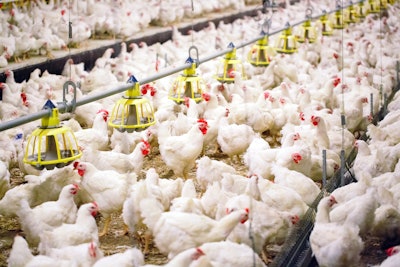
First ever cases of highly pathogenic avian influenza (HPAI) have been reported in poultry in the Eastern Visayas region of the Philippines, while Taiwan has confirmed recent outbreaks in several counties. Vietnam has registered the country’s first human infection with a common flu virus of avian origin.
Latest official update on the HPAI situation in Taiwan’s domestic poultry covers 22 outbreaks directly impacting more than 317,000 birds.
Starting between January 18 and March 18, these outbreaks linked to the H5N1 HPAI virus serotype were reported earlier this month to the World Organisation for Animal Health (WOAH).
Each affected flock comprised between around 200 and 33,800 poultry — mainly native chickens, but also meat chickens, laying hens, and breeding geese. While the majority involved farms, two outbreaks were detected at slaughterhouses, and one at an unidentified location. Premises were located in seven counties/cities.
Based on WOAH data, 32 HPAI outbreaks linked to this virus variant have been confirmed in Taiwan since November of last year. These have involved around 408,500 poultry.
More recently, Taiwan News has reported two further outbreaks. These involved two flocks of laying hens — comprising around 36,800 birds in Chiayi county, and 20,000 in Changhua.
In late February, one more wild bird tested positive for the H5N1 HPAI virus in Taiwan, according to a separate report to WOAH.
India confirms HPAI in 2 states
At the end of February, presence of HPAI of the same virus serotype was detected at a regional poultry hatchery in Nagpur — one of the largest cities in the western state of Maharashtra.
According to the official report received last week by WOAH, 2,650 of the around 11,400 poultry at the premises died, and the rest have been culled.
Authorities have also officially confirmed to the agency details of two earlier outbreaks in poultry in Andhra Pradesh. Cases in this state in southern India were reported previously by local media.
In the first week of February, the H5N1 virus variant was detected at two locations in the district of Nellore. Affected were first a farm with around 10,000 birds, and then a backyard flock at a distance of more than 20km.
In neither Andhra Pradesh nor Maharashtra has the source of infection been identified.
Philippines confirms first HPAI in Eastern Visayas region
Last month, local media reported the first ever outbreak of HPAI linked to the H5N1 virus serotype in the Eastern Visayas island region of the Philippines.
According to the official notification sent recently to WOAH, affected was a farm with around 60,500 poultry in province of Leyte. Almost 4,500 of the birds died, and the rest were culled to prevent further spread of infection. Source of infection is through to be wild birds or fomites, and the farm is surrounded by rice paddies that attract wildlife.
Meanwhile, three more outbreaks linked to the same virus variant in the Luzon area have also been registered with WOAH by the Philippines’ authorities.
These started between February 20 and March 10 and involved flocks described as “backyards.” The two earlier outbreaks were in the province of Pampanga, and the most recent was located in Kalinga.
This HPAI outbreak series began in January of 2022, and now comprises 259 outbreaks involving almost 2.1 million poultry.
To WOAH the authorities in the Philippines have recently declared a separate H5N1 HPAI outbreak series “resolved.” This covered broadly the island of Mindanao, and cases detected between February of 2022 and January of 2023. Directly impacted over this period were around 102,400 poultry at 27 locations.
Latest update on the disease situation in the country from the Bureau of Animal Industry puts the number of ongoing outbreaks at four (as of April 12).
In the Central Luzon region, outbreaks have occurred at one farm with quails in the province of Pampanga, as well as two premises in Nueva Ecija — one with quails and one with game birds. The outbreak in Leyte, Eastern Visayas involved broiler breeders.
Earlier this month, Philippine Star reported that authorities had seized quantities of unauthorized avian influenza vaccine. This was found — in plastic cups containing dry ice — in hand luggage of incoming passengers from Vietnam and other Asian countries.
HPAI developments in poultry elsewhere in Asia
This week, the HPAI situation in South Korea has been declared “resolved” to WOAH.
The declarations cover cases involving both poultry and wild birds, and the H5N1 and H5N6 virus serotypes. Since December of last year, six outbreaks involving the H5N1 variant were confirmed in domestic poultry, and birds tested positive for the H5N6 virus at 26 farms.
Meanwhile, WOAH has been notified that movement restrictions linked to the most recent HPAI outbreak in Japan have been lifted. This means there are no ongoing outbreaks in the country.
Two further human infections in Asia
Over recent weeks, the World Health Organization (WHO) has recorded two further infections with avian influenza A virus in people in the Western Pacific region.
In China, a 51-year-old poultry farmer in Yunnan province has a confirmed infection with avian influenza A(H10N3) virus, according to WHO. His symptoms began at the end of February, and he was admitted to hospital in early March.
Furthermore, Vietnam recorded its first ever human infection with a low-pathogenic avian influenza A(H9N2) virus last week. The patient was a 37-year-old man, according to the Centers for Disease Control and Prevention.
Source of the man’s infection is uncertain. Although he lived near a poultry market, no sick or dead birds have been reported there. The patient has underlying health conditions, and was admitted to hospital. This virus variant is known to circulate in poultry in many regions, and is the type most often identified in Vietnam.
At the end of March, the death was confirmed to WHO of a previously reported case involving the H5N1 virus variant in Vietnam. The 21-year-old man had no known contact with infected poultry, but had been involved in trapping wild birds prior to the onset of his symptoms.
View our continuing coverage of the global avian influenza situation.


















